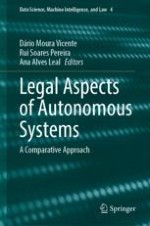2024 | OriginalPaper | Buchkapitel
Algorithmic Protection of the Core Area of Private Life. On the Deployment of Artificial Intelligence in Computer and Network Surveillance as a Duty of the State
verfasst von : Orlandino Gleizer
Erschienen in: Legal Aspects of Autonomous Systems
Aktivieren Sie unsere intelligente Suche, um passende Fachinhalte oder Patente zu finden.
Wählen Sie Textabschnitte aus um mit Künstlicher Intelligenz passenden Patente zu finden. powered by
Markieren Sie Textabschnitte, um KI-gestützt weitere passende Inhalte zu finden. powered by
